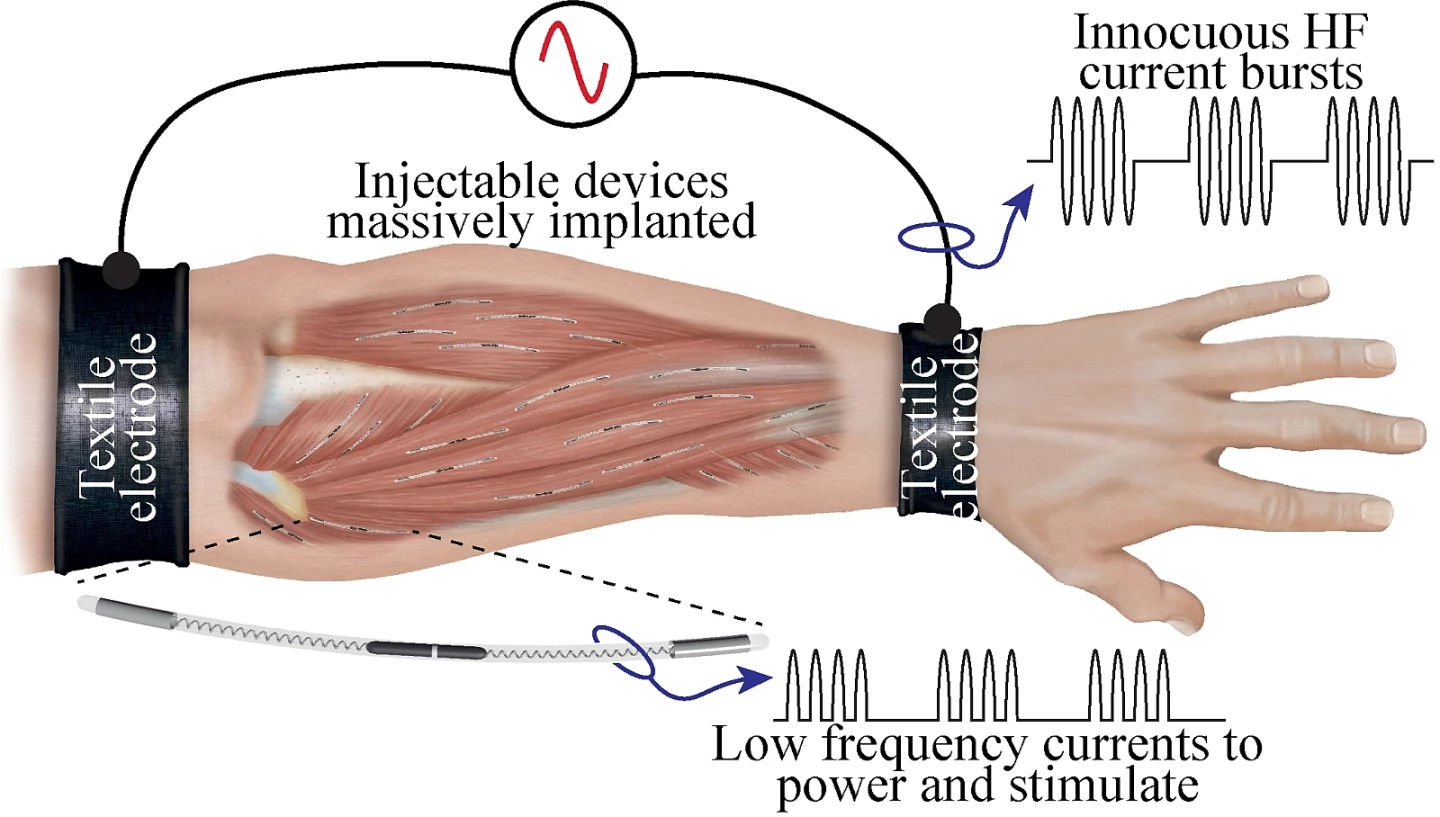There may be new hope for people who suffer from involuntary muscle tremors. Scientists are developing a partially implanted system that stimulates muscles in order to stop their problematic activity – with a little help from the nervous system.
The technology incorporates multiple electrodes, some of which are implanted inside the arm or leg muscle in question, and others of which are worn on the outside of the body. It is being developed as part of the EXTEND project, a consortium led by the Spanish National Research Council and made up of research groups from Germany, Iceland, Spain, the UK and the USA.
Injected into the muscle tissue via a catheter, the biocompatible platinum-iridium/silicone implants measure approximately 3 cm long (1.2 in) by 1 mm thick. Each device is equipped with two electrodes, one at either end. One of those electrodes serves as a sensor, while the other functions as an actuator.

Electrodes on the outside of the body wirelessly transmit power to the underlying implants. Those external electrodes are incorporated into ribbons of material worn around the arm or leg near the implant site, and they're hard-wired to a small wearable controller/battery pack.
As soon as one of the implants detects the onset of involuntary muscle tremors, it relays the data (via electrical pulses) to the system's external components. Upon analyzing that data, the controller triggers the internal electrode to stimulate the muscle.
Although the delivered electrical current isn't strong enough to directly affect the muscle, it is detected by the body's central nervous system. The idea is that the induced electrical activity will then interfere with the unwanted signals from the nervous system, causing the latter to stop sending them. In human experiments conducted so far, the system seems to be working well.
"Initial trials have shown that providing the patient with stimuli for one or two hours is enough to reduce tremor symptoms for a longer period of time," said Andreas Schneider-Ickert of Germany's Fraunhofer Institute for Biomedical Engineering, one of the project partners.
It is hoped that the technology may also one day be incorporated into powered assistive exoskeletons, which would move an arm or leg in response to detected nerve impulses in the limb.
Sources: Fraunhofer, EXTEND





